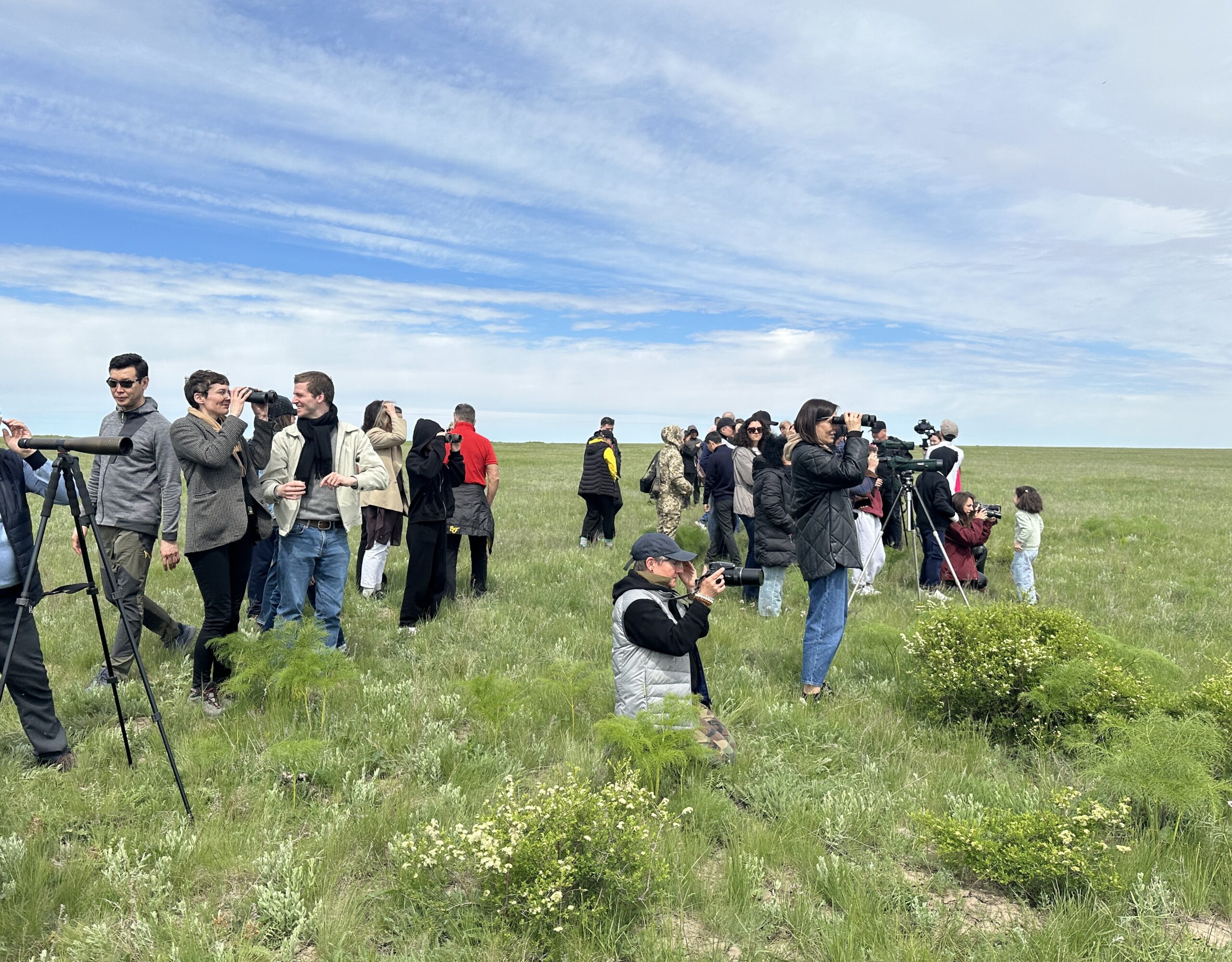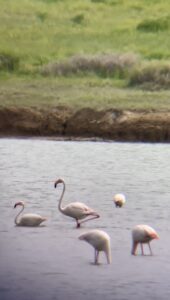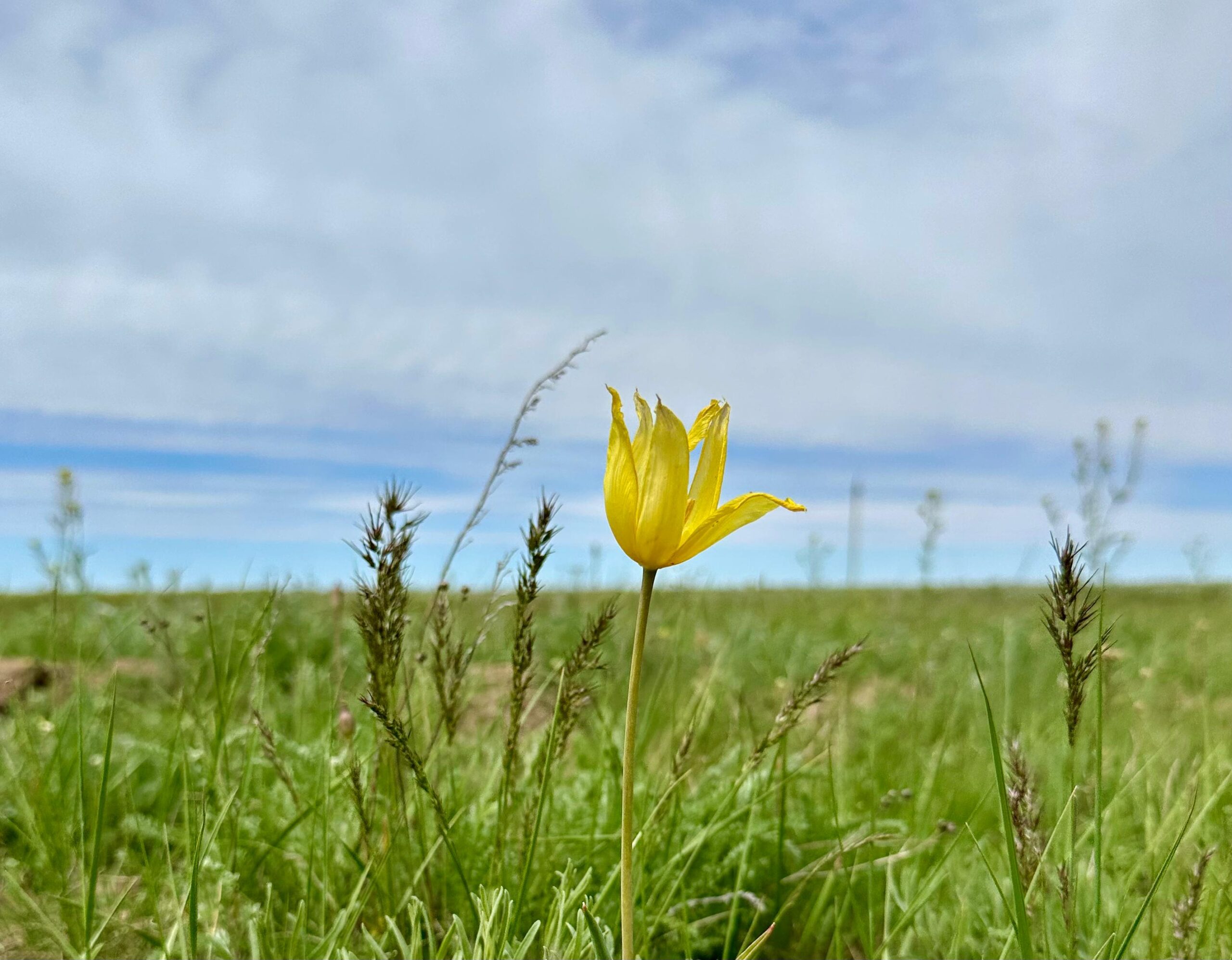ASTANA – The Akmola Region is recasting itself as a promising travel destination, with its diverse landscapes and nature reserves, said its Akim (Governor) Marat Akhmetzhanov during the May 11 field trip to the region’s Korgalzhyn state nature reserve.

Akim of the Akmola region Marat Akhmetzhanov (right) greets Swiss Ambassador Salman Bal (left) on a visit to Korgalzhyn on May 11. Photo credit: Akmola Region’s press service. The map is designed by The Astana Times.
Heads of the Astana-based diplomatic missions from European countries visited the village of Korgalzhyn on that day and the nature reserve to explore tourism and investment opportunities of the region in a trip organized by the Kazakh Tourism national company and the region’s administration.
“Today the Akmola Region’s tourism potential stands as one of the key drivers of its future development. Because of its diversity of landscapes, the unique natural features, and its proximity to the capital city, the Akmola Region is very well-positioned for the growth of the tourism industry,” said Akhmetzhanov.

Flamingo-watching at Korgalzhyn state nature reserve. Photo credit: The Astana Times
Akhmetzhanov emphasized the upcoming tourist strategy will not solely prioritize a surge in arrivals, but rather focus on educating tourists about Kazakh history and the historical significance of the places they visit.
“We need a civilized tourist. We need tourism, by which our state and our people will be perceived, so today, of course, the whole strategy and concepts of this industry are being revised. Our goal is not to merely attract a mass influx of people, but to ensure their experience is truly enriching, so that, in addition to seeing the beautiful landscape, they explore our history and culture,” he said.

Akim of the Akmola region Marat Akhmetzhanov planting a tree as part of Taza Qazaqstan campaign. Photo credit: Akmola Region’s press service
Akhmetzhanov suggested a smarter marketing approach aimed at developing travel packages that attract people to stay longer than just over a weekend, in addition to encouraging year-round visits, even outside peak seasons.
“Of course, we strive for differentiation. Along with very affordable one-day and two-day tours, we want to offer a package with visits to sacred places, to unique places. I think, today we have all the potential, the main thing we need is right management and good advertising,” said Akhmetzhanov.
“Unfortunately, we have a very large influx in the summer, and very few in the winter. We need to move away from seasonality, as even in winter, being a northern region, we have a very good offer for our tourism,” he added.
Drawing on the region’s spectacularly diverse landscape of mountain-hills, pine forests and lakes, Akhmetzhanov highlighted that the region offers something to suit every taste.

Phoenicopterus roseus or the greater flamingo.
“For those who want to walk through the pine forests, please [come]. For those who want to rest on the shore, we have lakes. For those who want to go to the steppe, we have national parks. So here we have a great variety for any taste,” he said.
In fact, the region is abundant in protected natural areas such as Burabai, Buyratau, and Kokshetau state national nature parks.
The Shchuchinsk-Burabai resort area is perfect for health and recreational tourism, spanning 130,000 hectares. Travel farther and one will find Zerendi resort area, spanning 36,700 hectares, that offers breathtaking landscapes and is perfect for nature tourism. The near-capital recreation zone comprises 30 tourism sites across four districts, while the sacred-reservation zone includes 900 historical and cultural monuments, such as the Baubek batyr (warrior) mausoleum and Kumai archaeological and ethnographic complex.
Visit to Korgalzhyn state nature reserve
As part of the trip, the diplomatic delegation visited the Korgalzhyn state nature reserve. Home to 46 species of mammals, 374 plant species, and a remarkable array of migratory birds, Korgalzhyn reserve in central Kazakhstan is an environmental paradise for birdwatchers and nature-lovers of all ages.

Tulipa Schrenkii or Schrenk’s tulip at Korgalzhyn nature reserve. Photo credit: The Astana Times
Korgalzhyn reserve has soared in popularity owing to its trademark – migratory pink flamingos. It is a nesting place for pink flamingos flying here from India, the Middle East and North Africa.
Landscape-wise, Korgalzhyn is a wetlands network of over 130 small lakes that typically welcomes as many as 5,000-10,000 flamingos and serves as their northernmost nesting place. They begin arriving in late March, stay through the summer and leave in October. Other waterfowl to frequent the lakes include pelicans, cranes and gulls.

Tulipa Schrenkii. Photo credit: The Astana Times
It is also home to saiga antelopes – the species that were once at the edge of extinction due to poaching that now reside in the depths of a nature reserve.
The delegation also enjoyed seeing the tulips in bloom. Despite the common association of tulips with the Netherlands, the territory of Kazakhstan is actually where the tulips have originated. The country is home to nearly 40 out of approximately 100-120 wild species known to date. Eighteen of Kazakhstan’s tulip species are included in the Red Book, while 12 are endemic, meaning they only grow in the country.
The Korgalzhyn reserve is home to five flower species listed in the Red Book of Kazakhstan: Tulipa Schrenkii, Tulipa patens, Pulsatilla patens, Pulsatilla flavescens, and Adonis wolgensis.
The delegation also took part in the environmental initiative called Taza Qazaqstan (Clean Kazakhstan) and planted more than 40 saplings at the Dudarai stele near Korgalzhyn village.


